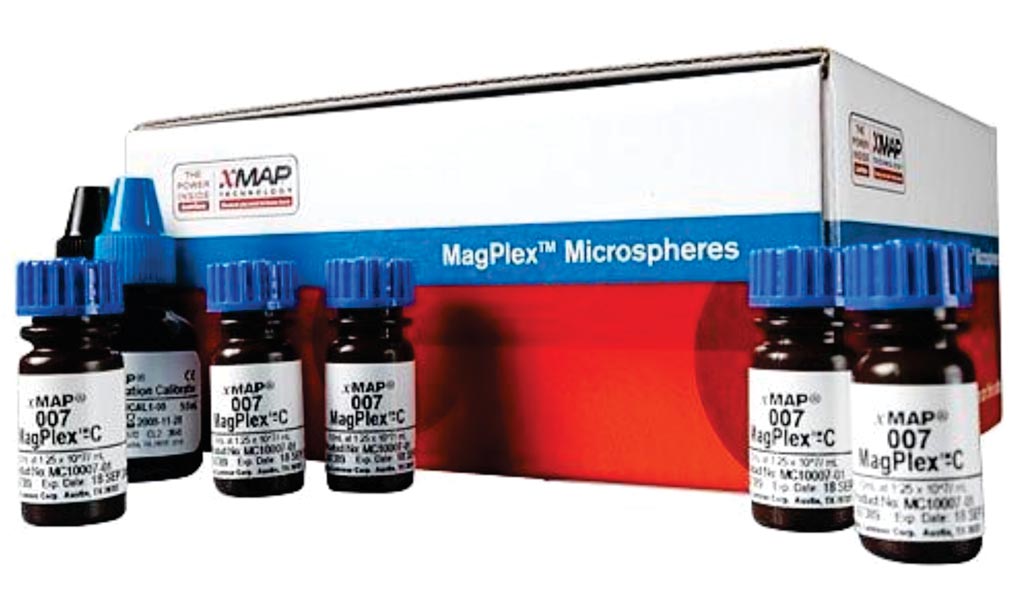Multiplex Microsphere Immunoassay Identifies Three Flavivirus Infections
By LabMedica International staff writers
Posted on 19 Sep 2019
The explosive spread of Zika virus (ZIKV) and associated complications in flavivirus-endemic regions underscore the need for sensitive and specific serodiagnostic tests to distinguish ZIKV, dengue virus (DENV) and other flavivirus infections.Posted on 19 Sep 2019
ZIKV is a member of the genus Flavivirus of the family Flaviviridae, which includes several pathogenic mosquito-borne viruses in different serocomplexes. The four serotypes of dengue virus (DENV) belong to the DENV serocomplex; West Nile virus (WNV) and Japanese encephalitis virus (JEV) to the JEV serocomplex; yellow fever virus (YFV) as a single member; and ZIKV.

Image: The MagPlex Multiplexing Microspheres (Photo courtesy of Luminex).
Tropical medicine specialists at the University of Hawaii at Manoa, (Honolulu, HI, USA) and their colleagues developed a high-throughput and multiplex IgG microsphere immunoassay (MIA) using the NS1 proteins of DENV1-DENV4, ZIKV and West Nile virus (WNV) to test samples from reverse-transcription-polymerase-chain reaction-confirmed cases, including primary DENV1, DENV2, DENV3, WNV and ZIKV infections, secondary DENV infection, and ZIKV infection with previous DENV infection.
The NS1 gene (corresponding to amino acid residues 1–352) of ZIKV (HPF2013 strain) with a His-tag at the C-terminus was codon-optimized. Six purified NS1 proteins, bovine serum albumin (BSA) and PBS (as negative antigen control) were coupled individually onto eight types of magnetic carboxylated microsphere beads containing different fluorophores (MagPlexTM-C) using two-step carbodiimide process at room temperature. Microsphere immunoassays (MIA) were performed and read by a Luminex 200 machine. Enzyme-linked immunosorbent assays were performed for DENV1-, DENV2-, DENV3-, and ZIKV-NS1 IgG.
The scientists reported that a combination of four DENV NS1 IgG MIAs revealed a sensitivity of 94.3% and specificity of 97.2% to detect DENV infection. The ZIKV and WNV NS1 IgG MIAs had a sensitivity/specificity of 100%/87.9% and 86.1%/78.4%, respectively. A positive correlation was found between the readouts of ELISA and MIA for the different NS1 tested. Based on the ratio of relative median fluorescence intensity of ZIKV NS1 to DENV1 NS1, the IgG MIA can distinguish ZIKV infection with previous DENV infection and secondary DENV infection with a sensitivity of 88.9%–90.0% and specificity of 91.7%–100.0%.
The authors concluded that the multiplex and high-throughput assay could be applied to serodiagnosis and serosurveillance of DENV, ZIKV and WNV infections in endemic regions. The study was published on August 23, 2019, in the journal PLOS Neglected Tropical Diseases.
Related Links:
University of Hawaii at Manoa














